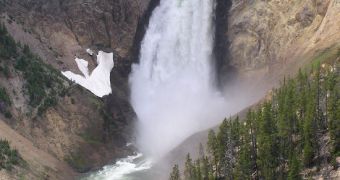In a finding that may help explain the volcanic activity taking place in Yellowstone National Park, investigators managed to discover a plume of molten rock rising to the surface.
They found the formation deep underground, right below the supervolcano. The new data could also be used to explain the various tectonic plate oddities appearing all around the Pacific Northwest.
According to a team from the University of California in Berkeley (UCB), led by expert Mathias Obrebski, it would appear that the underground plume extends upwards from a depth of about 1,000 kilometers, or roughly 621 miles.
This is the most convincing image to date made of the formation, the team says. The study also helps clear an old debate taking place in the scientific community, as to whether the plume actually exists.
Many researchers still doubt that is the case. The new model could maybe help the community reach a consensus that would see more funds being dedicated to this line of research.
Over the last few millions of years, small tremors and volcanic eruptions at Yellowstone have hinted at the fact that the supervolcano is still active to some extent, and many have attribute this behavior to the influence of the underground plume.
Such structures “are extraordinary features, in size and in the fact that they travel upward through the whole mantle in solid form,” explains expert Vic Camp, quoted by OurAmazingPlanet.
The scientist is based at the San Diego State University, and was not a part of the recent investigation. “It's a really simple idea to explain a number of different phenomena on Earth. But the simple idea was very difficult to test,” he adds.
“Chemical and physical volcanology evidence suggested a plume, but this is the first seismic proof,” the expert goes on to say.
“There's been subduction in the [Oregon] region for more than 150 million years, so we'd expect to see a large continuous slab. But what we see are just fragments,” Obrebski said in an interview of what the team found under Yellowstone.
The team published detailed accounts of its observations in the July 22 issue of the esteemed journal Geophysical Research Letters.
Camp believes that the new discoveries may also hold some clues as to precisely what happened during mysterious events in the planet's history.
“If you look at the mass extinctions on Earth, we think that a few may have been associated with eruptions from mantle plumes,” he says.

 14 DAY TRIAL //
14 DAY TRIAL //